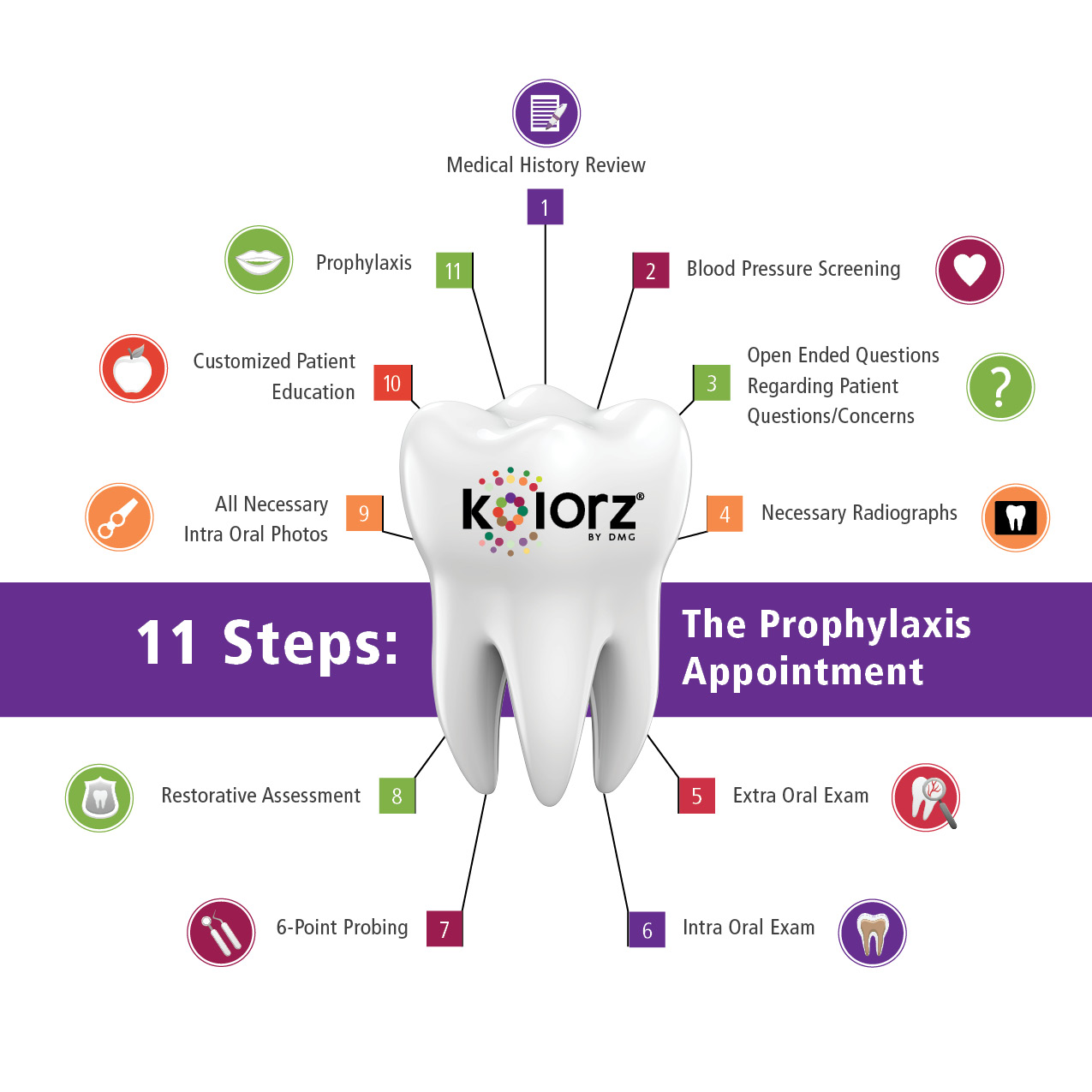by Shannon Pace Brinker, CDA, CDD
 One of the best ways to ensure your practice is delivering the best standard of care in the hygiene department is to develop a series of written Standard of Care documents. Practices with Standard of Care documents typically yield better case acceptance as well as higher levels of team calibration. One of the most common procedures performed in the hygiene department is the prophylaxis (D1110). To many coding experts, the D1110 is also one of the most misinterpreted codes in all of dentistry.
One of the best ways to ensure your practice is delivering the best standard of care in the hygiene department is to develop a series of written Standard of Care documents. Practices with Standard of Care documents typically yield better case acceptance as well as higher levels of team calibration. One of the most common procedures performed in the hygiene department is the prophylaxis (D1110). To many coding experts, the D1110 is also one of the most misinterpreted codes in all of dentistry.
CDT Code Description
As stated in the 2011-2012 CDT procedures book, a prophylaxis is defined as: “Removal of plaque, calculus and stains from the tooth structures in the permanent and transitional dentition. It is intended to control local irritational factors.”
Interpreting CDT Code Into Clinical Practice
Prophylaxis [prō’filak’sis] Etymology: Gk, prophylax, advance guard, prevention of or protection against disease, often involving the use of a biologic, chemical, or mechanical agent to destroy or prevent the entry of infectious organisms. At its core, a prophylaxis is meant to prevent or protect against disease. It is not meant to treat active infection. Therefore, if a patient presents with signs of active infection, this patient is no longer appropriately treated with a prophylaxis.
Signs Demonstrating Active Infection
According to the American Academy of Periodontology, up to 75% of Americans have some form of periodontal disease. The signs of active infection include:
- Gingivitis Infection: Probing depths 1-3mm but the patient has a bleeding response on 15 or more sites during full mouth perio charting
- Periodontal Disease Infection: Bleeding pockets of at least 4mm demonstrating evidence of radiographic bone loss
The Prophylaxis Appointment
The Determination of Health is Based on the Above Description of Patients with Active Disease. Here is a step-by-step outline of the appointment flow for healthy prophylaxis patients:
- Medical History Review

- Blood Pressure Screening
- Open-Ended Questions Regarding Patient Questions/Concerns
- Necessary Radiographs: Radiographs are prescribed based on ADA guidelines of risk-based prescribing. To view the ADA’s prescribing protocol visit: www.ada.org/sections/professionalResources/pdfs/topics_radiography_chart.pdf
- Extra Oral Exam: Hygienists must explain what this procedure is. “Mrs. Jones, I’m now going to be doing your external head and neck exam. In just a moment, I’ll be doing the intraoral exam.”
- Intra Oral Exam: Hygienists will explain what they’re doing in order for patients to be fully informed. A patient can certainly feel the hygienist doing the tongue pull but many times they have no idea what the basis for that procedure is. Informing patients of not only what you’re doing but also why reinforces your practice’s commitment to an exceptional standard of care. Here’s what the narrative might sound like prior to performing the intraoral exam, “Mrs. Jones, I’m going to be doing your intra oral cancer exam. When Dr. Smith comes in to do your exam, she’ll also be repeating this procedure.”
- 6-Point Probing: All numbers charted and all bleeding sites charted at least once annually. It is a good idea to place this perio charting protocol in your practice’s Standard of Care document. Hygienists inform the patient of what the periodontal screening is. Tell the patient you’ll be calling out each number. Normal readings are typically between 1-3mm and healthy gums don’t bleed. Tell the patient this procedure is a screening for periodontal disease.• Be sure to review the results of the periodontal screening with the patient once full perio charting is completed. Consult with the dentist to determine periodontal disease status or to confirm periodontal health.
- Restorative Assessment
- All Necessary Intra Oral Photos: Capture image of inflamed tissue, heavy bleeding upon probing, faulty restorations
- Customized Patient Education
- Prophylaxis: Based on CDT Codes, D1110 – not to be performed on patients unless they are healthy. Prophy on healthy patients (1-3mm probing depths with less than 15 sites of bleeding):
- Using ultrasonics or piezo electric scalers for calculus removal and subgingival biofilm disruption
- Site-specific hand scaling for supragingival stain and hard deposit refinement
- Coronal polishing (fine grit preferred) or use of air polisher
- Flossing
- Topical Fluoride Varnish for moderate-to-high caries risk individuals
- Review the evidence-based review of topical fluorides and prescribing protocols
- Hygienists will give the patient-specific recommendations determining patients recare interval based on individual risk
Putting These Steps Into Practice
Granted, the routine prophylaxis has become just that – routine; but considering the AAP’s estimates of the incidence of periodontal disease, it begs the question, “Do you currently have patients in recare that are already beyond the healthy-prevention state?” Enrolling existing recare patients into active periodontal therapy is a necessary step in order to adequately treat their chronic periodontal infection.
